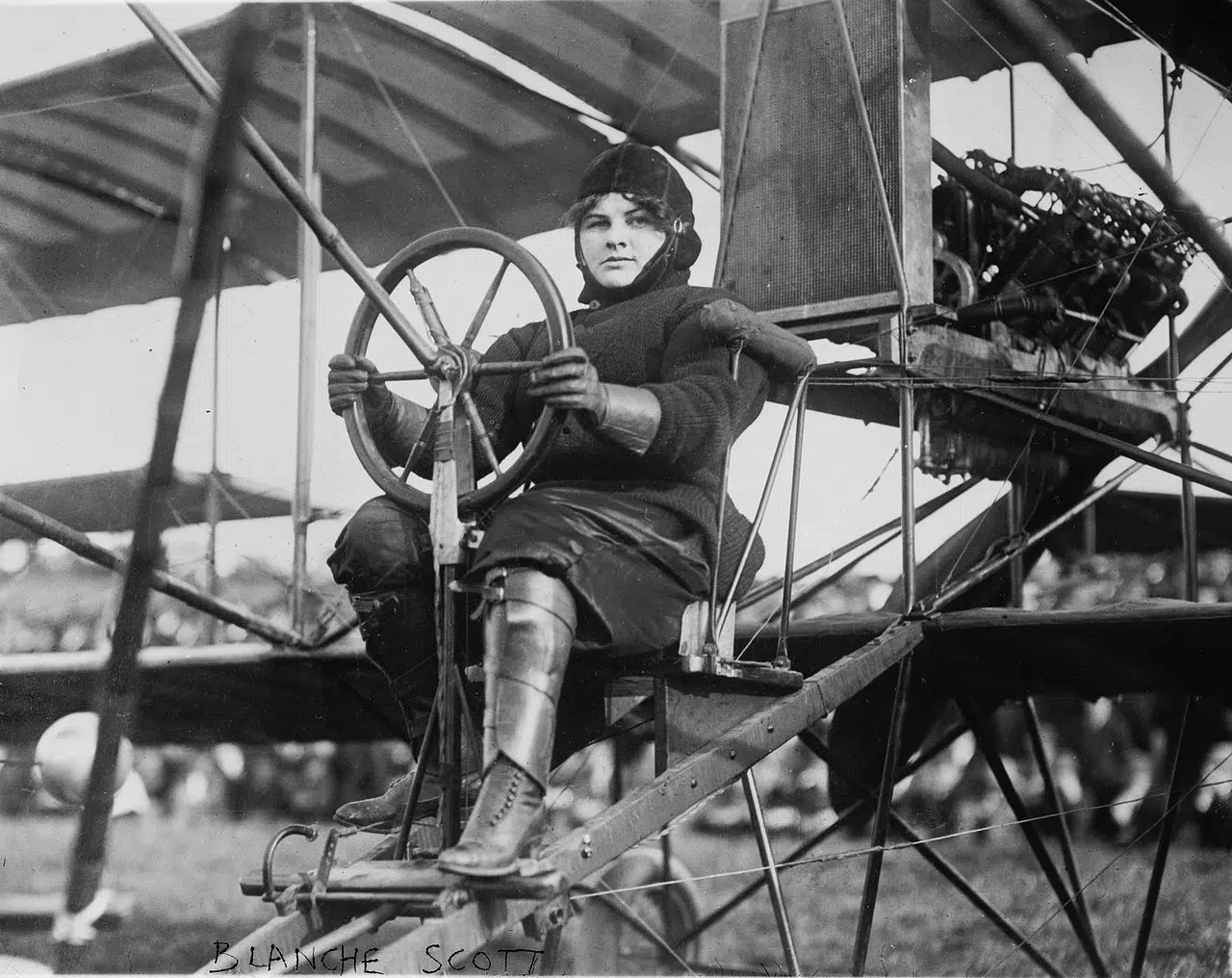[New to the Journey? Read this for a brief introduction!]

by Gideon Marcus
Up in the sky!
There are some intrepid women whose names are household words: Willa Brown, Jerrie Mock, Amelia Earhart. Others are not so familiar. The other day, I read the obituary for a pioneering soul I'd not known of before.
Blanche Stewart Scott was born in 1885. A native of Rochester, she was 25 when she drove a 25-horsepower Overland stock car from New York to San Francisco, her 69 hour journey marking the second time a woman had made a transcontinental drive.
This attracted the interest of aviation pioneer Glen Curtiss, who took her under his wing (so to speak) and trained her to fly. Apparently, Mrs. Scott had never seen an airplane before her coast-to-coast jaunt; she was caught in a traffic jam outside Dayton, Ohio, caused by a flying exhibition out of Wright Field.
After just three days of instruction, she made her first solo flight on September 5, 1910, from an airfield in Hammondsport—what may well be the first time an American woman piloted an aircraft.

Over the next four years, until she gave up flying, she suffered 41 broken bones in a number of crashes. She was one of the lucky ones: "Most of the early women fliers got killed," she once observed.
Scott's later career included working as a scriptwriter, film producer, and radio broadcaster in Hollywood. In 1948, she became the first woman to ever ride in a jet aircraft. During the '50s, she combed the country for vintage planes to stock the U.S. Air Force Museum near Dayton.
She died on January 12 at Genesee Hospital in her native town of Rochester, New York.
Down in the mud

by Michael Gilbert
Another pioneer of sorts had something of a flutter, if not yet a brush with death (I hope). The latest issue of Fantasy and Science Fiction is pretty bad…
Continue reading [January 20, 1970] Jolly good Ffelowes (February 1970 Fantasy and Science Fiction)

![[January 20, 1970] Jolly good Ffelowes (February 1970 <i>Fantasy and Science Fiction</i>)](https://galacticjourney.org/wp-content/uploads/2025/01/700120fsfcover-672x372.jpg)